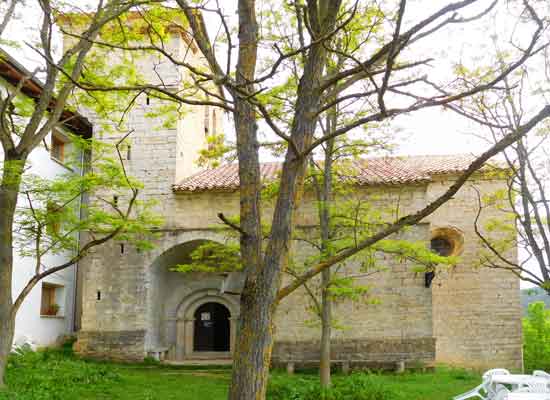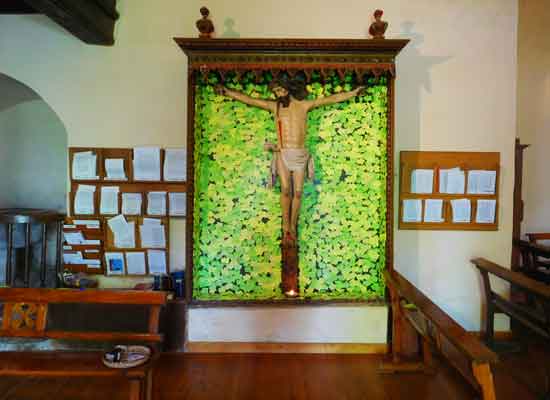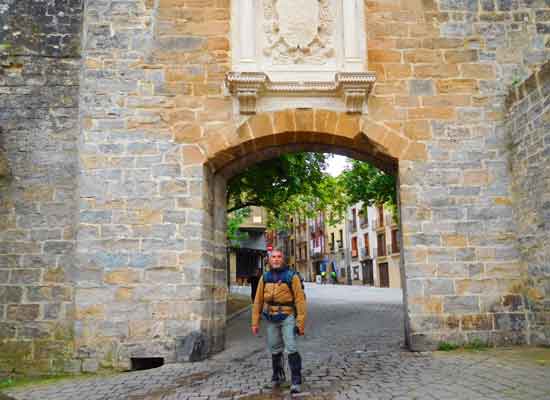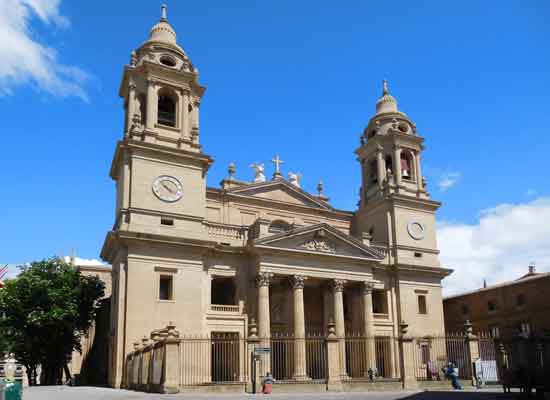Step by Step on The Way of Saint James
From Zubiri to Pamplona
13 May 2018
Stage 3 – 20 km

This morning, before setting off, I manage to have breakfast at a bar opposite the hostel, already open from six o'clock.
Peppe, Franco, Maria, and I haven't set a specific time to meet; we had only roughly planned to start around seven. Moreover, Peppe and Franco don’t intend to stop in Pamplona this evening but want to push further as their aim is to complete the entire Camino in less than a month.
Personally, I have no reason to rush and want to enjoy the experience at my own pace.
The French Way, which runs from Saint-Jean-Pied-de-Port to Santiago de Compostela, is traditionally divided into thirty stages, so it can be completed in exactly one month. If one wishes to continue to the ocean, it takes three more days to reach Finisterre and an additional day to finish in Muxía.
Alternatively, The Way can be customized, either speeding up or slowing down, with stops in intermediate locations rather than the usual ones. In fact, every village along the route, whether large or small, offers accommodation options.
The possibility of finding no vacancies in hostels arises mainly in the classic stopover points since most pilgrims stick to the standard itinerary.
***
I set off alone from Zubiri at 7:10. I wait just ten minutes to see if any of my friends show up.
Maria and I will meet again during several stages of The Way, but from this moment, I lose track of Peppe and Franco, who plan to go faster and reach Santiago de Compostela in less than a month.
I will only see them again in July, in Torre del Greco, when we organize an evening reunion.
***
The weather today doesn’t look promising: it’s a chilly, cloudy day with occasional drizzle.
Leaving Zubiri, I cross the charming “Bridge of Rabies” again and immediately find myself walking through bucolic landscapes. The path runs alongside the Río Arga, the same river that flows through Pamplona.
Today’s route is fairly straightforward: it’s not very long—about twenty-one kilometers—and is quite flat.
Feeling in good shape, I continue my Camino pleasantly.
While waiting to find somewhere along the way to stop and have something substantial to eat, I always carry water, dried fruit, and the indispensable banana. Sometimes, I also bring bread, with or without fillings.
I brought some maltodextrin-based energy gels from home, recommended by a pharmacist friend. I didn’t take many to avoid adding extra weight to my backpack.
I only use one when a stage seems particularly demanding, although, frankly, I can’t say whether they make much difference.
The only certainty is that my backpack lightens by fifty grams each time I use a gel, and that already feels like a big advantage.
Just before ten, I stop at a bar near Zuriain where, as I often do, I have a portion of tortilla with bread and freshly squeezed orange juice.
The bar is full of pilgrims, including Juaní and Salvador, both Spanish.
I’ve come across them a few times before and exchanged a few words in my broken Spanish, but this is when a close friendship starts to form between us, one that will extend beyond The Way.
They, too, met along the way and are walking together.
Juaní is from Portugalete, in the Basque Country. She’s a widow with two daughters, has retired from work, and is waiting for her pension. She’s a lively, affectionate, and caring little woman.
Salvador, though originally from Spain, lives in Strasbourg, France, where he drove city trams. He has a wife and children and is already retired. He has had some health problems, but now he’s in good shape and determined to tackle The Way.
Salvador has a cheerful and friendly face, but his expression darkens every time he talks about Francoism and how his father had to leave Spain for political reasons.
Juaní suggests booking accommodation in Pamplona, as she and Salvador have already done.
Given what happened in Zubiri and not wanting to waste time searching for a place to stay instead of exploring the capital of Navarra, I take Juaní’s advice.
She even kindly calls the hostel for me.
I resume walking more calmly, no longer worried about finding somewhere to sleep.

About eight hundred meters past the village of Irotz, I reach Zabaldika and make a short detour to visit the small Church of San Esteban, built in the 13th century in Romanesque style.
To get to the church, located on a hill, I cross the main road and follow a steep path for a few hundred meters.
A nun in “civilian” clothes greets me and, after asking my nationality, hands me a leaflet in Italian describing the church.
Inside, the highlights are a colorful 17th-century altarpiece (retablo in Spanish) and a baptismal font that’s four centuries older.

Also striking is the multitude of yellow post-it notes shaped like arrows, bearing requests and/or thanks, placed by passing pilgrims all around a wooden crucifix near the entrance.
I leave one too.
Climbing a narrow stone spiral staircase, I reach the top of the bell tower.
Following the nun’s suggestion, I ring the smaller of the two bells, announcing, as tradition dictates, that another pilgrim has visited San Esteban.
Rumor has it this is the oldest bell in Navarra.
Most pilgrims skip this short detour, so besides the nun, I’m the only person in the church the entire time—making the experience even more special.
Before leaving San Esteban, I make a donation and get my Credencial stamped by the nun.
Along The Way of Saint James, there are many opportunities to collect stamps (sellos, in Spanish) in the Credencial. In addition to hostels, sacred sites, bars, restaurants, and even private individuals have their own stamps to mark each pilgrim’s journey, serving as evidence of their passage.
My intention is not to overdo it with collecting these stamps, to avoid diminishing their significance. I prefer to limit the stamps in my Credencial to the places where I stay overnight and locations I consider particularly meaningful—just like the small church of San Esteban.
***
It is 11:10 as I continue walking along the Río Arga.
The beautiful rural landscapes reappear, and in some sections, the route even passes through wooded areas.
After covering roughly another four kilometers, I arrive around noon at the Church of La Trinidad de Arre, which lies just after the picturesque medieval bridge over the Río Ulzama.
Here, I enjoy five minutes of rest and peace inside the small 12th-century church.
By now, the destination is near: after passing through Villava and Burlada, I can already consider myself in Pamplona.

Arriving on foot in a large city gives me a strange feeling. In all the trips I have taken so far, I have always reached major urban centers by plane or land transport, such as trains or buses—never on foot, after covering a long approach route.
As I already mentioned in more detail in the prologue to this account, one of the motivations that fascinated me and pushed me to embark on The Way of Saint James was the idea of taking a “slow journey.”
This would allow me to truly perceive, stretch by stretch, the physical distance traveled to reach my destination—a sensation that gets lost when flying between continents.

***
Crossing the Puente de la Magdalena over the Río Arga, I find myself in the historic heart of Pamplona.
Today’s stage ends at 13:30 when I reach Hostel Plaza Catedral, located right next to the cathedral.
Here, I meet Juaní and Salvador, who are about to go to a restaurant with Jesus, a Spanish friend of theirs.
They invite me to join them, but I politely decline, preferring to have a larger meal later in the evening while, for now, a quick snack will suffice.
After all, I have only this afternoon to explore Pamplona.
After my usual end-of-stage routine (shower, laundry, short rest), I start visiting the “casco antiguo” of the city.
Leaving the hostel, the neoclassical façade of the Cathedral of Santa Maria la Real immediately catches my eye.
I admire its exterior but must postpone seeing the interior, as it is currently closed.
A little further along, I bump into Rocco from Turin, whom I haven’t seen for a few days.
We chat for a while and exchange phone numbers, agreeing to meet later for dinner.

I head to Plaza Consistorial, home to the beautiful baroque town hall (ayuntamiento). Every year, on July 6th at noon, this is where the “chupinazo” rocket is launched to signal the start of the famous San Fermín festival.
I continue exploring the city, wandering partly at random and partly following a loose itinerary.
I arrive at the Church of San Lorenzo, which houses the relic of San Fermín, the city’s patron saint. Unfortunately, it is closed, so I can’t see the interior.
Outside the church, I meet Judith, a young and friendly woman from Madrid who now lives in France. She practices yoga and other oriental disciplines.
We stop to chat for a while, and from this moment, a friendship begins that will strengthen every time we meet along The Way.
I continue discovering Pamplona, visiting the Ciudadela or Castillo Nuevo—a Renaissance-style pentagonal military fortress.
Inside its imposing walls, there is now a large park where cultural events and performances often take place.
Returning to the city center, I pass by the Church of San Nicolás, notable for its neo-Gothic portico.
Then, I cross Plaza del Castillo, considered Pamplona’s “living room,” and finally reach the Monument to the Encierro—just as it starts to rain.

The Encierro is the famous bull run that takes place during the San Fermín festival, made famous worldwide by Ernest Hemingway, who described it in his 1926 book “The Sun Also Rises.”
The bull run winds through the streets of the old town and ends in Plaza de Toros, where the bullfights are held in the afternoon.
The monument commemorating the event features life-size statues of bulls and people.
The artwork dramatically freezes a moment of the race, showing unleashed bulls chasing some runners while knocking others down.
Since it’s raining, I take the opportunity to stay indoors and visit the bullring, even though I’ve heard there’s little of interest inside.
The “ruedo” (the arena where the bullfights take place) isn’t open to the public, and access is limited to the perimeter gallery, which currently hosts stalls selling handicrafts.
While browsing the items on display, the rain stops, so I head back to the hostel, trying to walk through streets and alleys I haven’t yet explored, hoping to find a livelier area.
I must admit, Pamplona disappoints me a little.
I expected a vibrant city with a lively atmosphere, bustling with people animating its streets.
Instead, I find a completely deserted city.
Today is Sunday, and all the shops are closed, as are most bars and other gathering places. Only a few remain open. As a result, combined with the gray and drizzly day, very few people are out and about.
I imagine this is an unusual situation, and that Pamplona is typically a lively city, as reports suggest.
Shortly before 19:00, I return to the cathedral. This time it is open, and I take the opportunity to visit its Gothic-style interior.
The Latin-cross floor plan is divided into three naves, ending in a polygonal apse.
In the central nave, there is the tomb of King Charles III the Noble and his consort, topped by alabaster statues of the sovereigns.
As I leave the church, I meet Rosario and Nicola. They also tell me they have plans to meet Rocco for dinner.
We head together to the chosen restaurant, where everyone else is already gathered—eight of us in total.
In the group, there’s also Dante from Civitavecchia, who will soon become another friend with whom I’ll share many stages of The Way.
Despite having met each other so recently, we spend the evening chatting and laughing with the same camaraderie as old friends, helped along by the good wine that accompanies the “pilgrim’s menu.”
| © Aldo Lardizzone 2020 |  |
CREATIVE COMMONS |



